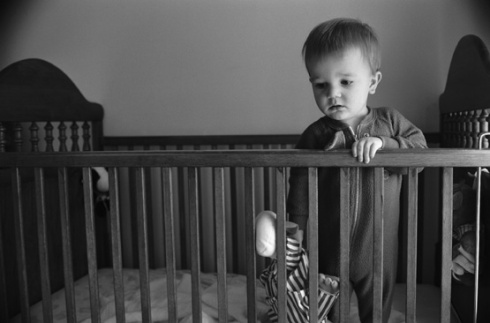In the world of child welfare, there is a lot of good happening. We have good people with good hearts working hard to keep children protected from abuse and neglect. We have hard working individuals who put in hours and hours to make sure children who have been abused and neglect are able to live in safer environments and experience better outcomes than they would otherwise see. We have policy advocates working diligently to inform evidence-based policy reforms. And we have representatives in office pushing for laws that will continue to improve the child protective system. All of this good has led to better outcomes for some children but, unfortunately, there are still tens of thousands of children across the country falling through the cracks the size of the Grand Canyon.
So, the question remains….why does our system fall so far short? Why do so many of these children have outcomes including PTSD, unemployment, homelessness, sex trafficking victimization and imprisonment at rates far above any other group? Why do we keep seeing headlines about a broken system, a system that repeatedly allows children to die due to abuse and neglect even after local child protective services have been alerted to their precarious state? It’s a national disgrace.
The answer is not simple and has multiple layers. Sure there are some bad actors out there. Additionally, the child protective system is woefully underfunded (or at a minimum inappropriately funded). But the answer can also be seen when you look at our federal child welfare structure. Every state in the union accepts money (totaling billions of dollars) from our federal government in exchange for agreeing to follow federal requirements in administering the State’s child welfare system. This places the federal government as the backbone of our child welfare system so it is worthwhile to take a look at the glaring holes that exist in our policy and the enforcement of that policy.
In a brand new study, Shame on U.S., the Children’s Advocacy Institute uses the federal government’s own internal documents as the basis to criticize all three branches of the federal government for being derelict in their duties to the most vulnerable children in our nation. States are consistently failing to protect abused and neglected children but the Department of Health and Human Services (HHS) rarely exercises its oversight powers to ensure state compliance with federal mandates – essentially becoming the states’ complicit partner. HHS often takes on a passive monitor role, allowing states to self-certify compliance and set lower standards and performance expectations for themselves — all of which allow glaring inadequacies to go unabated. In many instances, private citizens have been forced to turn to the courts to seek California’s compliance with federal child welfare laws but federal courts have been reluctant to find that federal laws allow aggrieved children and families a private right to sue. And, unfortunately, Congress has shown little appetite to address these issues by plugging the holes where the executive and judicial branches are dropping the ball or failing to act. This completes a trifecta of inertia and neglect and often leaves advocates, and more importantly the children they aim to protect, spinning in a circular trap.
Shame on U.S. connects all these dots for the first time, holding all three branches accountable, pointing out their inter-related failures and the critical need to cure these deficiencies. There are concrete action steps that can be taken by each branch to mitigate the current harm.
HHS must:
- Toughen its oversight and enforcement activities to ensure that each state operates its child welfare programs consistent with federal law, and HHS must impose serious consequences when states fall short;
- Revise its evaluation program to end the process that allows failing states to meet a compromised set of lowered expectations;
- Utilize its rulemaking authority in a more robust manner with regard to the interpretation of federal child welfare laws. Regulations are enforceable. Anything less is not.
Congress needs to:
- Provide clear private remedies for children within all federal child welfare statutes, to enable private litigants to seek judicial recourse when violations occur;
- Repeal or revise current law to ensure that all foster children are treated equally without regard to their economic status, that states comply with all aspects of all child welfare laws or suffer real consequences, and that HHS plays an active and vigilant role in ensuring state compliance via monitoring and enforcement activities;
- Eliminate the “look back” provision that makes a child’s eligibility for federal foster care funds dependent on whether the child’s family would have qualified for AFDC in 1996. It is arcane, primitive, and hurts children and families;
- Impose consequences on HHS for failing to follow through with its oversight and enforcement responsibilities;
- Restore and reinforce funding for child welfare programs at levels that ensure an effective child welfare system, enact comprehensive child welfare finance reform to address a wide range of problems — such as a complex mix of mandatory and discretionary funding that results in haphazard payments to states, swaths of uncoordinated funding from disparate sources with inconsistent mandates; a host of unfunded mandates; and a dearth of accountability for the money spent by the states.
The federal judiciary should:
- Acknowledge its role as a check and balance to lax executive branch enforcement of child welfare laws, and resolve any ambiguity in federal law as to whether children and families have a private right of action in their favor;
- Ensure that states entering into consent decrees bring their child welfare systems into compliance with federal law in a more timely manner than is currently the case.
Support for these changes should cross political party borders. The children these policies are designed to protect are, in a very real sense, our children. Our representatives have crafted laws allowing for the removal of these children from their parents. Our government then steps in and takes these children with the understanding that we, as a system, can protect and raise these children better than their parents can. Leaving these gaping holes in our child protective system is a true national disgrace and each day that passes while we allow them to remain – Shame on U.S.
You can find the report at http://www.caichildlaw.org/Shame_on_US.htm
Author: Christina Riehl, Senior Staff Attorney at CAI











